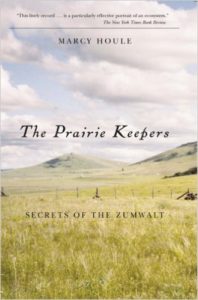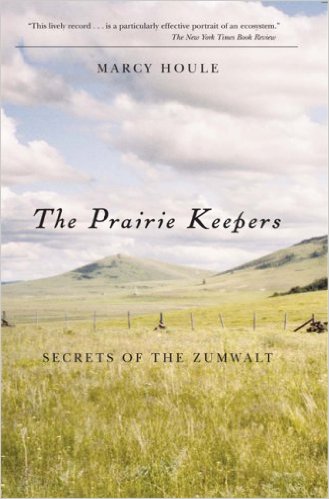 A New York Times “Best Book for Earth Day”. Finalist for the Oregon Book Award. A New York Times Notable Book.
A New York Times “Best Book for Earth Day”. Finalist for the Oregon Book Award. A New York Times Notable Book.
In the remote northeast corner of Oregon lies the ruggedly beautiful Zumwalt Prairie. A wild expanse of untilled ground covering nearly two hundred square miles, the Zumwalt is almost entirely managed by cattle ranchers. It also is home to one of the highest concentrations of hawks in North America, including red tailed, ferruginous, and Swainson’s hawks. Strong and beautiful, these buteo hawks usually depend on uncultivated, unpeopled prairies. Marcy Houle, a wildlife biologist and student, first went to the Zumwalt in 1979 to discover what attracts and sustains the buteos there in such startling abundance.
Houle explores the vast prairie on foot and horseback, and by truck, cataloging its hawks, studying its complex ecosystem, and meeting its people. Fueled by her youth, her spirit, her humor—and in part by her naiveté—she bands birds, outruns a bull, climbs into nests, and pulls together the factious community of ranchers, towns people, and government employees. Her findings, eloquently reported, show that ranchers and grazing and wildlife not only can coexist, but in some instances must coexist if we are to save the last of the native prairies. In an epilogue to this new edition, Houle returns to the Zumwalt to look at how the prairie is faring two decades later.
The American West is undergoing tremendous change and a historic way of life is fighting for survival. But Houle finds reason for hope in the Zumwalt—in the hawks and ranchers that are still there, and also in creative new partnerships. For example, the Nature Conservancy bought 42 square miles of the grassland in 2000, with a plan to encourage sustainable cattle grazing and let ranchers play a role in the stewardship of the land. This and other strategies are important to explore, Houle reminds us, if the ranchers and wildlife of the Zumwalt are to persist and the prairie to endure.
“The Prairie Keepers: Secrets of the Zumwalt balances tales of adventures in prairie life with a complex meditation on the ties that bind human and natural communities together. Seemingly competing species actually constitute a healthy ecosystem on the Zumwalt, and seemingly very different humans can work together to accomplish mutually beneficial goals. The impact of The Prairie Keepers has been great. According to Phil Shephard, Northeast Oregon Stewardship director for the Nature Conservancy, Houle’s research laid the groundwork for the Conservancy’s work in the region, culminating in a nature preserve that now spans 51 square miles.” —Review from “Modern American Environmentalists”, 2009, The Johns Hopkins University Press.

